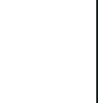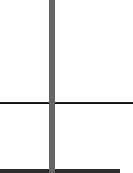On community, border and Israel
Yael Bartana speaks to Magdalena Ziółkowska
Magdalena Ziółkowska: What intrigues me in your video works and, lately, also in your photographs, is ‘the border’, existing on various levels.
Yael Bartana: I have never thought about it. It seems to me that my films concentrate on the problem of society and the social position of its particular members, but also on how a particular social position determines one’s behaviour and forces one to do something. People set relations among themselves, they manifest some behaviours, and also bring to life their own institutions as in the film entitled “Kings of the Hill” (2003). On the dunes, close to Tel Aviv, men in their beloved truck cars gather to participate in an extraordinary spectacle resembling a war of a very specific kind. The men climb the dunes in their vehicles, they conquer them. In the light of the reflectors, fire and sunset this spectacle is observed by children and grown-up men. Similar ‘rituals’ can be found in other Mediterranean countries and in the United States as well. These open air ‘male spectacles’ present power, primitiveness; they simulate war and conquest.
M. Z.: Asking about ‘a border’ I meant a contrast, and, at the same time, a tension between the private sphere and the sphere of social and political. I am interested in the way you use the private sphere, described by emotions, feelings, intimacy, and situate it in the realm of what is social and political. I am thinking here, for example, of “Wild Seeds” (2005), presented at the Istanbul Biennial, in which young Israeli leftist activists simulate a game “Evacuation of Gilad’s Settlement”.
Y. B.: That is right, the sense of this work is difficult to grasp. The information has been given in a very limited form, in a few sentences. On a separate screen there is a translation of young people’s screams, callings, voices. Isolated from the film projection they create and show a completely different history. They can be perceived independently, being, at the same time, still readable. That was the idea. I do not want to put too much information in a work. I only want to create an emotional situation, so that anyone, no matter their descent, could participate in it on the level of emotions and psyche. Showing this film in Turkey, I wanted to overcome its local, contextual meaning, as a film full of the violent confrontation between the Israeli Army and Jewish settlers, to point to the problem of settlement and occupation and of the laws ruling it. Because of a separated text and a lack of commentary, the film becomes quite abstract, and, at the same time, universal and nostalgic. This game however, could only be played in the eighties. Young protagonists, on the one hand, stay innocent, on the other they are afraid and conscious of what they do.
M. Z.: How did you get to meet the protagonists of this film?
Y. B.: Thanks to my nineteen-year-old niece. She is one of young Israeli girls who refused the military service. Among the protagonists of this film, there are both those who have just been drawn to the army and those who refused. At the beginning of the game, two representatives are being chosen. Their task is to separate, to break the rest of the group. The others formed a circle, they are close to each other, they are holding each others’ hands, legs, they hold themselves, they are forming a resistance. All protagonists of the film belong to the third generation of this conflict, they are not settlers and they are against Israeli occupation of these lands. The hill where the action takes place belongs to the Occupied Territories. It is a beautiful landscape of Prat Settlement. The game could be played as well anywhere else.
M. Z.: It causes the feeling of suspension, of lack of a history, of a story, of a broken narrative, or an imperfect, distorted narration.
Y. B.: Yes, there is no narration in a traditional sense. We do not follow the adventures of a protagonist, there is no storyteller. At times, it seems to me that my films resemble moving film stills. Once, my students from Film Academy told me that “in my films nothing is happening” in the sense of the rules of cinematic art, as they were educated. I have classes in two film schools in Israel and I encounter these reactions on the part of my students very often. At the beginning, it was a great surprise for me when they said that my films resembled ‘moving pictures’. Seemingly, nothing is happening, there is no drastic development of action. In some of them, the action is maximally slowed down. They make an impression of a ‘post’ history, as if we were experiencing a world after an event, after life, after a great catastrophe.
M. Z.: At the same time, they seem universal. They can take place everywhere and anytime. But it seems to me that this universality is quite apparent. There is constantly a borderline between what is known and what is unknown. Even if an image will be legible for us, we will be able to describe what we see, even then, we will be always left with the feeling of ‘uncertainty’, ‘indeterminacy’ which suggests that what we see is not that obvious at all.
Y. B.: I think it is related to the quasi-documentary character of some of my works. They become metaphors. An amount of information included in documentaries is enormous: thousands of histories which are being recalled and told. In my works, there is a reversed process – getting rid of information, clearing the information out. A protagonist of my first film, which I made still during my studies in Rijksakademie in Amsterdam, entitled “Profile” (2000), was a female-soldier of Israeli Army during exercises with arms. I had this idea for a long time, it was evolving while I was in the United States. Having done my military service I started studying photography at the Bazalel Academy of Arts and Design in Jerusalem. In the meantime, I was also studying at Jerusalem Academy of Music and Dance and six months after graduation I left for the United States. I went there in order not to participate in anything, not to have any obligations, to be totally ‘outside’. I went there for freedom. I mainly made some short advertising films for commercial companies, and after almost four years, when I had enough, I decided to return to art and I applied to the Rijksakademie. Going back to the film “Profile”, I was thinking about it for a long time, because in New York City I lived manly with my compatriots who constantly criticised the politics of Israel. Then I thought I would like to come back to my homeland and make a series of photographs with women serving in the army. This idea could come into being only when I was in the Netherlands. After my arrival, I got in touch with a spokesman of the Israeli Embassy, I wrote some applications and I got the permission to make a film. The date of filming was the Remembrance Day and Independence Day. All in all, I had four hours of material. I could have observed, filmed, but I could not have spoken to my protagonist. I felt like a witness of a very weird phenomenon. The female-soldiers did everything according to the rules of training: they were loading, aiming, shooting, wearing headphones, standing in the line, etc. And it was so difficult for me to realise that a few years before I had been one of them. I had a feeling of this incredible distance to that situation. My position was completely different. There was no belief in lawfulness. I started to wonder in what way the army creates discipline, belief in indisputable lawfulness of a particular behaviour. The protagonist of the film performs all sorts of rituals based on order. Here my students are right saying that I am not telling stories. Nevertheless, by showing so little, I have a feeling that I am saying a lot of things in an indirect way. It is very important for me to keep distance, to speak from a particular distance.
M. Z.: Films made in Israel are filled with the feeling of ‘community’ which is very explicit and, at the same time, very brutal. There are religious feasts such as Purim, or national (for example, the Remembrance Day). Is Israel your experimental field?
Y. B.: I watch Israel from far away, from a distance without a blindfold. I am thinking on what is that place I grew up in. How long will the nation cultivate today’s state of ignorance? Working with form, sound, movement, I am trying to create a possibility of an individual reception of my works. Personal, individual reactions have this power to provoke something which could be called a ‘modest reception’. Its power and range is completely different from predictable, controlled reactions, as for example, on the state’s scale. It is similar with collective identity.
M. Z.: In “Trembling Time” (2001), presented during Manifesta 4 in Frankfurt, cars stop for a few minutes on a four-lane motorway. Suspended in time, they give an impression of a moment of rest in the constantly growing state of danger, in the politics of threat.
Y. B.: Israel exists in a constant state of danger, both social and political. The politics of threat introduced by the government does not solve any existing social problems. Quite contrarily, it pushes the social issues to the margin. The politics of threat together with national anniversaries and remembrance days is an indispensable part of the construction of Israeli feeling of community and unity. “Trembling Time” takes place in Tel Aviv during the Soldier’s Memorial Day. On the one hand, cars stopped on a motorway in contemporary rush seem almost irrational, and for many they mean only a car crash. On the other hand, this day is one of many military anniversaries established in order to cultivate tradition and shape national identity. The feeling of threat, more or less real danger, is supposed to unify the society.
M. Z.: For some people similar experiences will definitely be related to building of a community, however, in your works there is a sense of rebellion, for example, in the way you treat time, sound, protagonists, the way you go back to the values among which you grew up.
Y. B.: Art enables me to express my discontent or the refusal to participate. It also helps to share my feelings with others. Such a ‘community’ is being constructed on a totally different level, far from an official language, the language of the state politics. Almost all my works were made in a response to the reality I experienced. Majority of these experiences were Israeli ones.
M. Z.: On one of your last show, personal exhibition in Van Abbemuseum in Eindhoven (2006) apart from your video works, you also showed a series of photographs. Was it for the first time?
Y. B.: I decided to show photographs which were taken in different places and at different times. I dug them out, like an archaeologist, I found them. And now I am trying to put them in an order, I am making series, I am creating new histories and stories. Working like this reminds me of working with film frames. This getting rid of superfluous information, clearing out is needed in both. I do not concentrate on individual stories, places, events, etc. but I treat these photographs rather like an unprivileged glance freed of manipulation – photography on the level of the eyes.





















